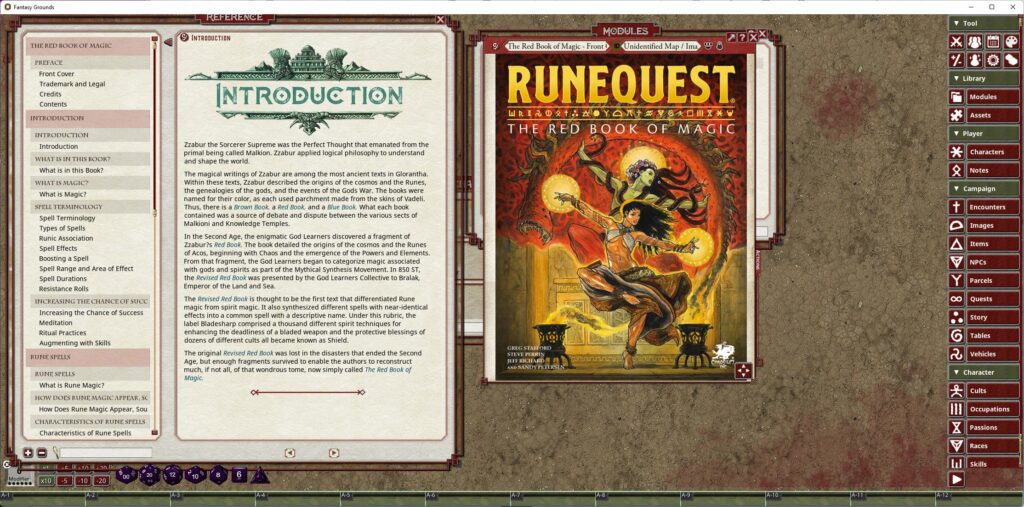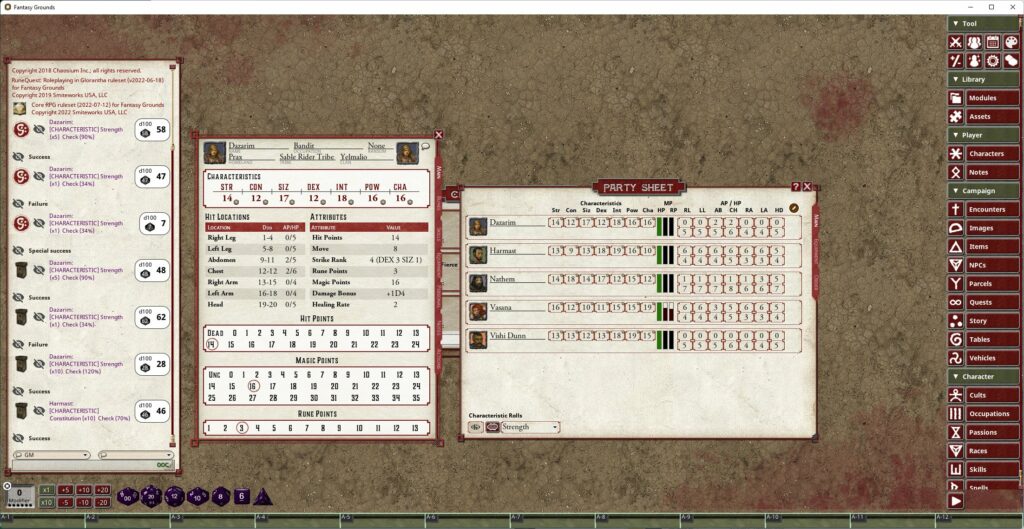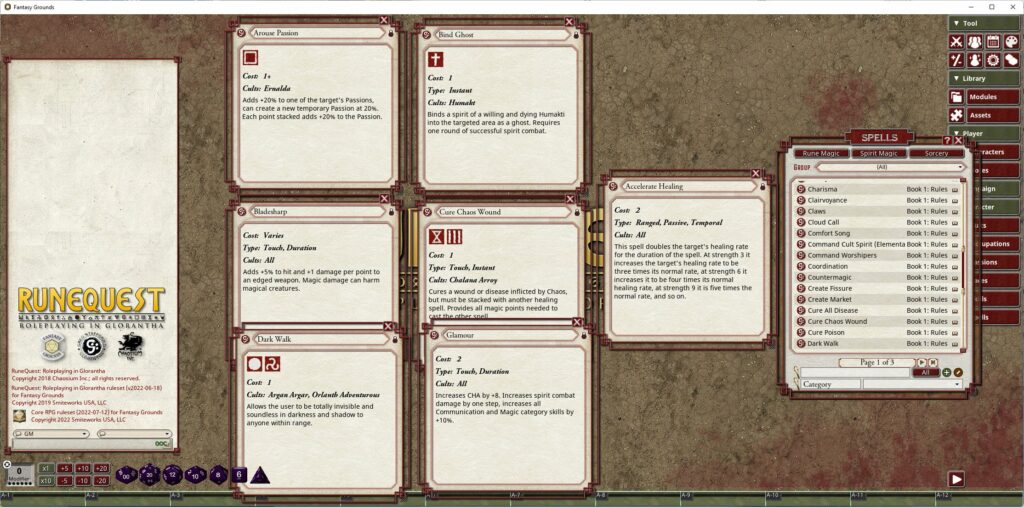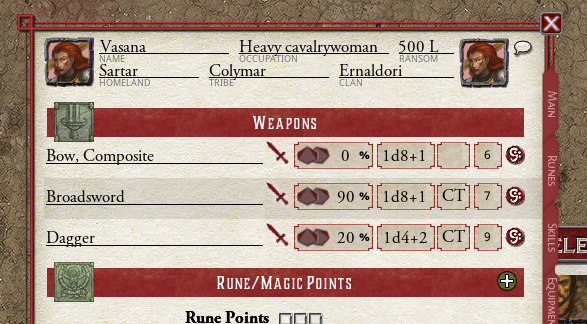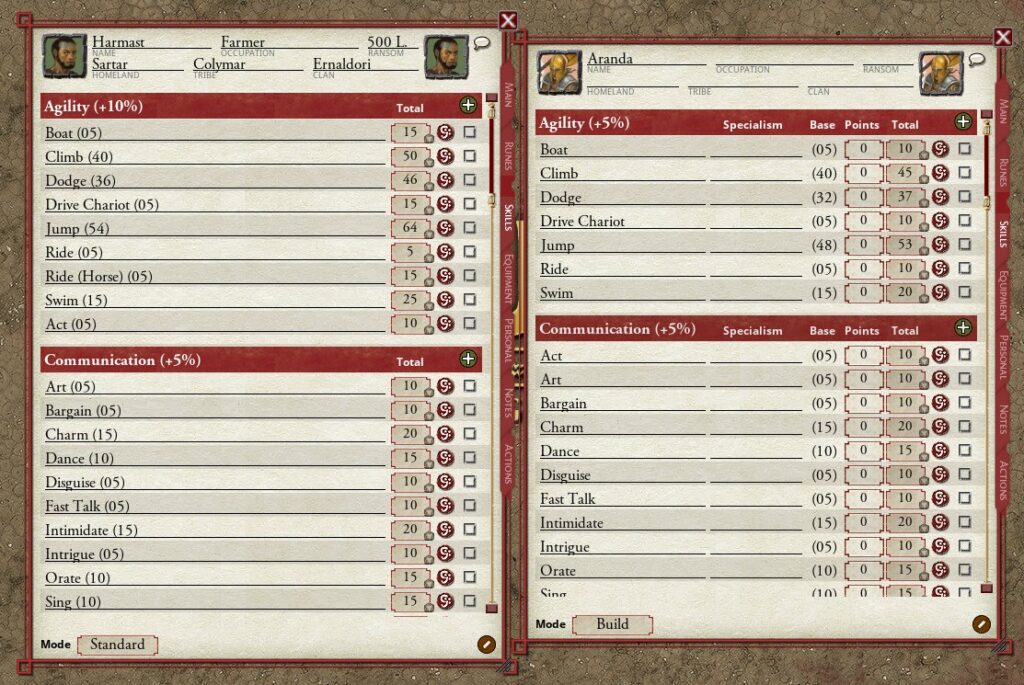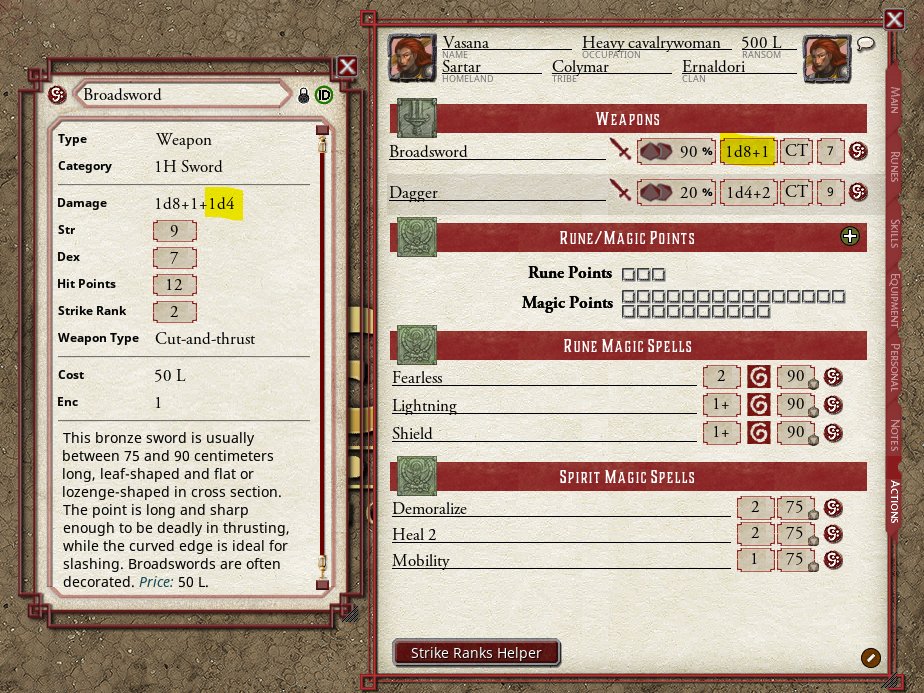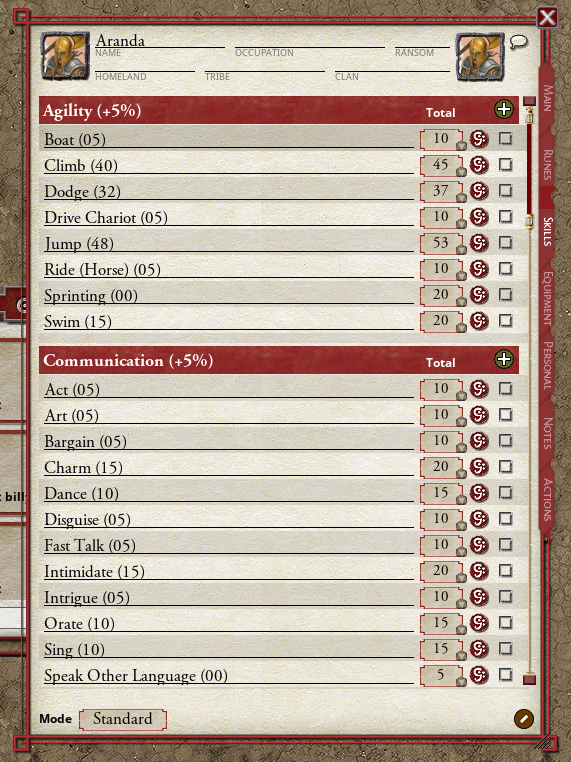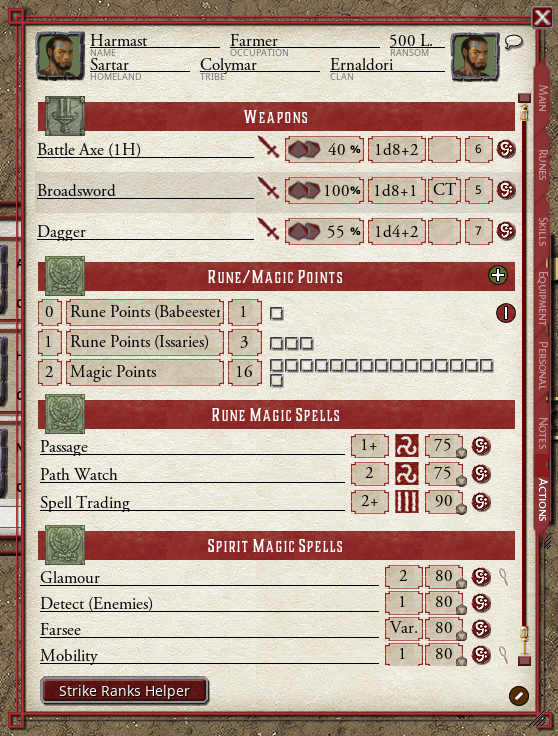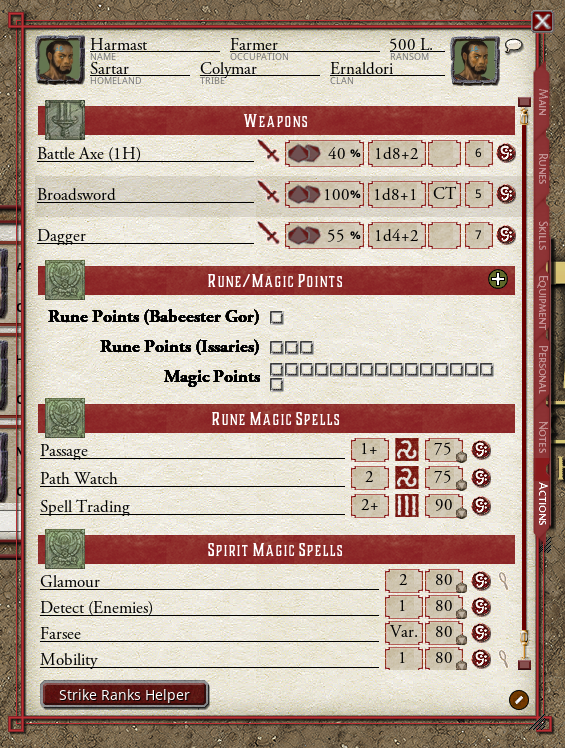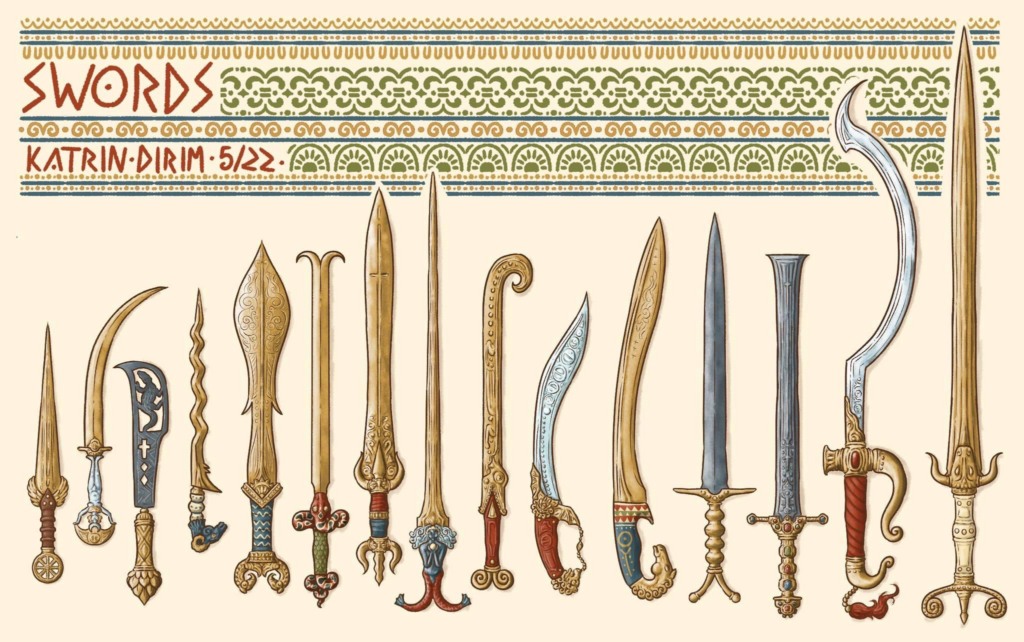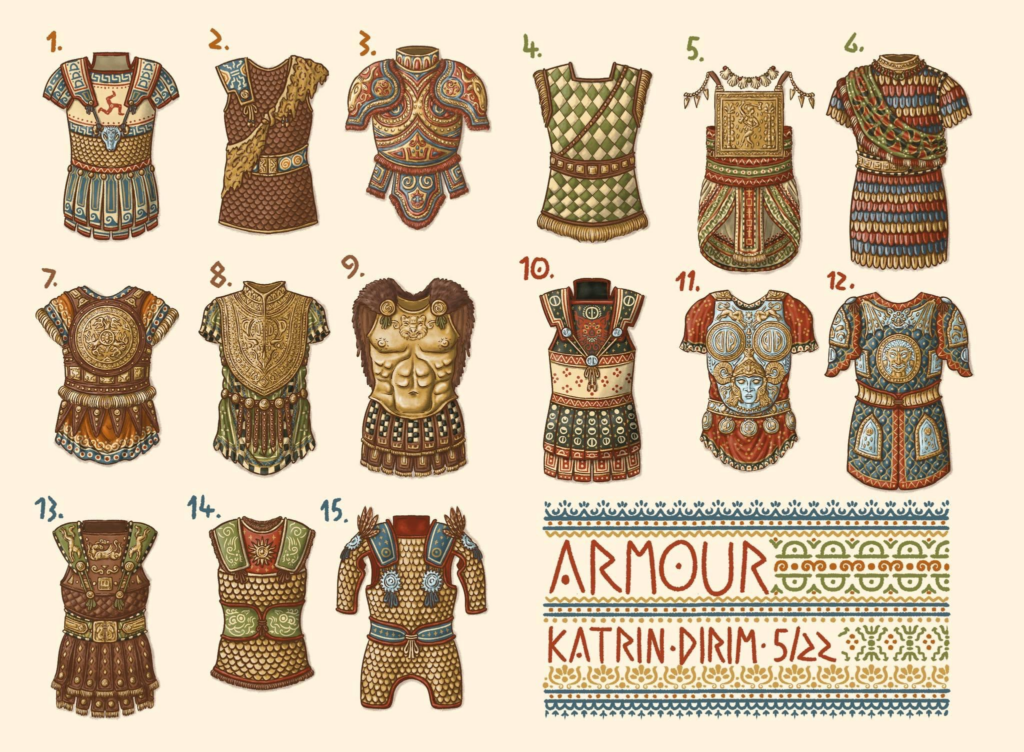Welcome to a new issue of the Journal of Runic Studies, the premier Malkioni publication for studies into the nature of Glorantha. If you haven’t subscribed yet, please consult with the spirit bound to the appropriate electronic page.
Last week and week-end were exceptionally busy for me, so the newsletter doesn’t go too deep and even, for the first time, skips some of Jeff’s notes. Apologies! Now quick, let’s get on with it!
Chaosium News

Here are this week’s Chaosium news!
A New Hero – The Trials of Harvest
Episode 1 of the new RuneQuest stream is out! I’m happy to see James Coquillat back in the gamemaster’s chair, although with only two players: Bridget Jeffries (Miskatonic Repository embassador for Chaosium) and David Naylor (digital content manager for Chaosium).
Not much else to say yet since I haven’t had time to watch this past the introductions… if you did watch, what did you think?
Fantasy Grounds Integration Updates
The developer working on RuneQuest’s Fantasy Grounds integration continues to post updates on Twitter.
In no particular order we have a look at the party sheet and characteristic rolls, the Red Book of Magic reference, a finished “magic resources” section, a cleaner layout for the spells compendium, a finalized editable skill list, some request for feedback on damage bonuses, and new features for missile weapons.
Jeff’s Notes

Jeff Richard, the current mastermind on everything Gloranthan at Chaosium, is often posting notes and thoughts on the RuneQuest Facebook group. Here’s our curated list from the past week. A partial archive of these sources is compiled on the Well of Daliath.
Tarsh Exiles
The Tarsh Exiles are the holdout Tarshites who still resist (rather pointlessly, if you ask me) the Lunarization of their Kingdom. Jeff paints a rather bleak picture in the first paragraph… I can’t wait to have my players visit the place, because I love Maran Gor cultists.
In addition to the archived bits linked above, Jeff posted this, too, on the “social order” among the Tarsh Exiles:
The High Priestess of the Shaker Temple, often called the Shaker Priestess, is the unquestioned authority in the region. However, by tradition she does not involve herself in mundane issues of justice, trade, or war, preferring to let these be handled by tribal officials, approved by her. The current Shaker Priestess is Sorana Tor, reincarnated from an earlier era and now tended by 47 men and women—all cannibal virgins.
Cannibal virgins. Told you it’s wonderful!
For matters of justice, trade, and war, the Tarsh Exiles form the Kerofini Tribe. The Shaker Temple has great influence over tribal affairs and in 1448 they insisted on a queen and a matriarchal inheritance, overseen by the priestesses, but that proved disastrous. Since 1455, the priestesses chose a king to ceremonially marry the goddess and become lord of the ring. The king needs to be able to serve the goddess or her representative during sacred rituals, and inheritance is matrilineally derived. The tribe otherwise follows Orlanthi norms.
In 1625, the Shaker Priestess chose Unstey of Wintertop to be the Sacred King of all the Tarsh Exile clans. He rules from Wintertop Fort.
The Far Point
Here’s a short description of the Tarshite-speaking tribes North of Sartar. There’s nothing new here, except maybe for the fact that the Vantaros tribe has slightly more Yelmalions than Orlanthi… that’s a lot of military power to wave around, when you consider than hoplites of the Cold Sun are much better soldiers than an Orlanthi militia that only trains once a year.
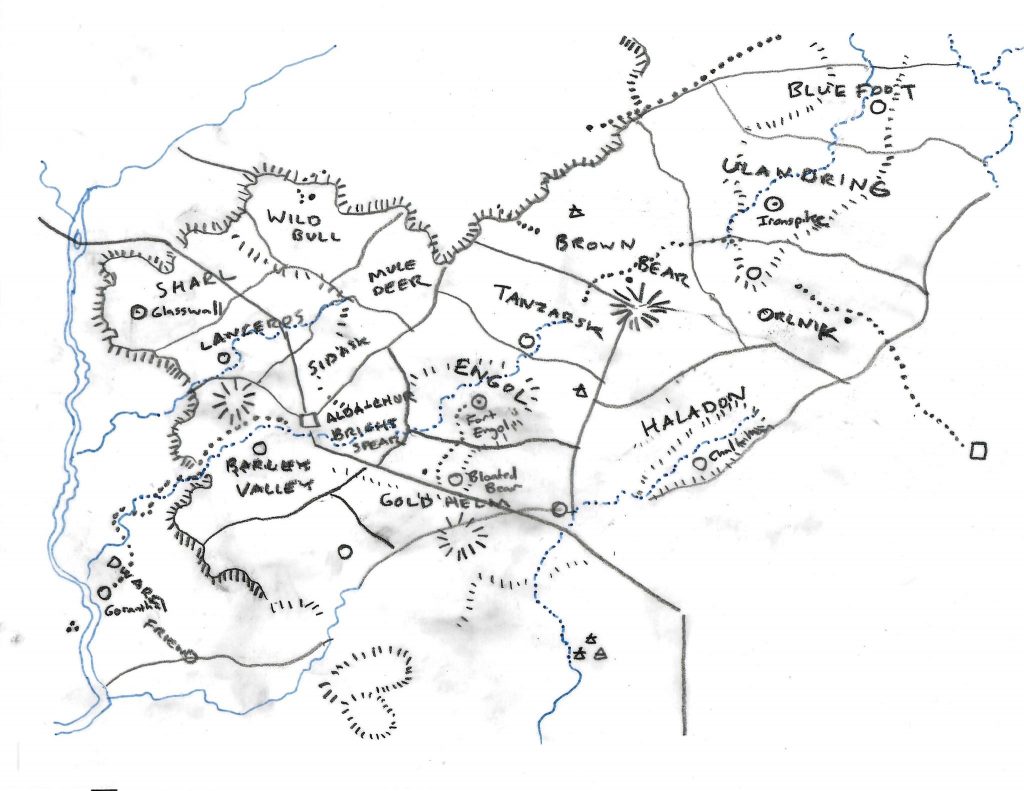
Jeff previously shared some notes on the Far Place, or at least the Alda-churian (above) and Dinacoli (below) parts, including some cult membership figures.
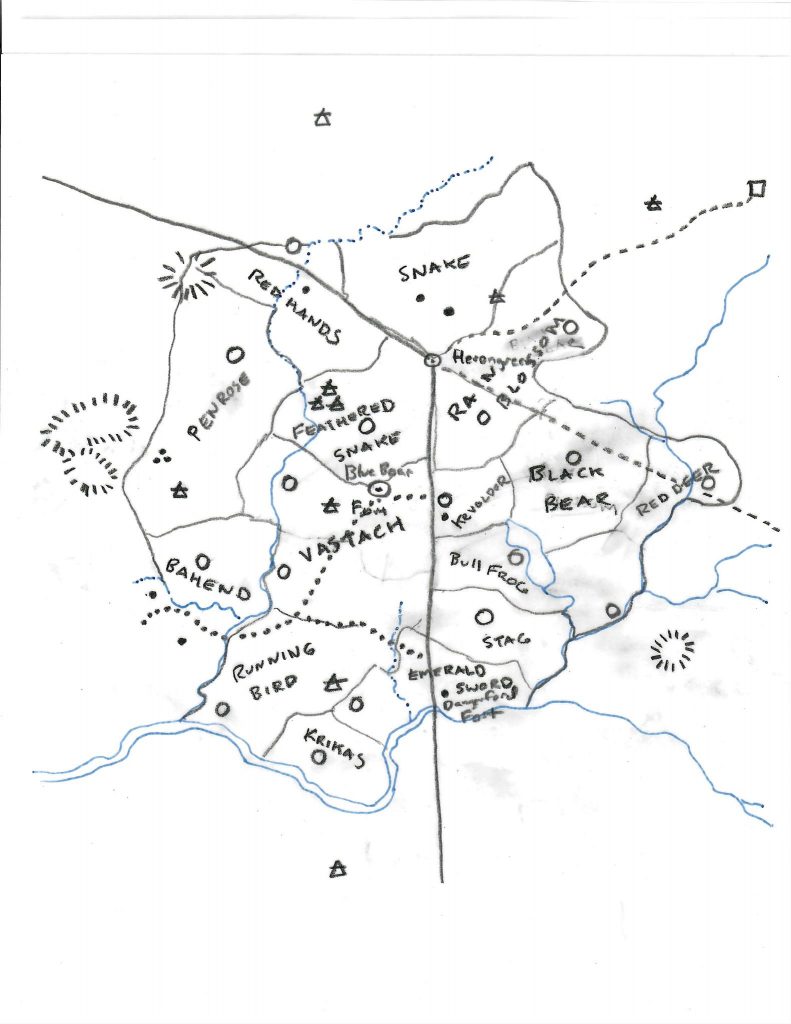
It can get confusing however that the area is sometimes called “Far Point” or “Far Place”, and that it sometimes includes the Alone confederation and sometimes not…
Sir Ethilrist
Some notes on the scary black knight dude:
I view Sir Ethilrist as a guy who climbed up the greasy pole and lost himself on the way. Although in his case, it is that he fell so far he has no idea where he started from any more. He was lost in the Realm of the Dead, made pacts with Darkness Demons, sacrificed his beliefs, causes, friends and family in order to survive and gain power. Each betrayal could be justified with a half-truth but after so many stacked up, the only thing that could justify this is the Destiny of a Hero. It was not his decision to enslave his followers to the Hell Horses as part of a Dark pact – that was Destiny. It was not his decision to bind the Hound into submission or make the bargain with the Goblins. All this was was what “needed” to be done to fulfill his destiny or whatever. It is only Keener Than that reminds him that this is a lie – Ethilrist decided to do these things.
I only know the short version of the Ethilrist’s bio: some sort of mercenary from Ralios who went to the Underworld and got the Doom Hound (his hellish steed), a Cloak of Darkness, and a herd of demonic Black Horses for his soldiers, now called the Black Horse Troop. Given that his original warband was called the White Horse Troop, you might think his heroquest gifts were a bit too much on the nose but hey, this is Glorantha, so we’re going to call it “mythically resonant”.
I personally picture Ethilrist more like a guy a with a purpose, who actively went looking for these dark powers, and got corrupted along the way… and who knows who’s really in control, between Ethilrist, the Darkness demon in his cape, and the Doom Hound. Maybe he’s got a 3-way schizophrenia or something. In the Disney version, these two other things stand on each of his shoulders and sing evil plans into his ears. I mean, back in the White Bear & Red Moon board game, both the cloak and the hound had their own counters!
Anyway, Ethilrist sold his services to the Red Emperor for thirty years in exchange for the land now known as Black Horse Country… although when the deal expired he immediately turned on the Lunars and helped the Grazelanders sack Dunstop.
The “bargain with the Goblins” might be explained by checking, once again, the White Bear & Red Moon board game rules. In it, Sir Ethilrist can invoke the Cloak of Darkness and stay put for a couple turns, after which “the darkness congeals to become a unit of goblins”. More on goblins later.
Keener Than is Ethilrist’s “childhood friend and former scout”, who he found while he was in the Underworld. He was “instrumental in Ethilrist’s success in the Underworld, and they rode back to life together.” But Keener Than immediately turned against Ethilrist, so there’s probably an interesting story about how Keener Than ended up down there in the first place…
And so Ethilrist spends a lot of time quietly observing his private collection of treasures, hoping that might assuage his uneasy heart.
His 2600 Black Horse Troopers and 2000 Auxiliaries were given this vale circa 1567. This by the way greatly alienated the Feathered Horse Queen who later married Prince Tarkalor. Ethilrist dutifully served the Red Emperor and fought at the Battle of Grizzly Peak. But in 1597, his 30 years of service expired without a renewal, and the next day he offered his services to the Feathered Horse Queen. Together they sacked Dunstop and halted Lunar expansion until 1602.
Ethilrist claimed a valley that already had peasant farmers in it, followers of Ernalda and Barntar. Ethilrist had NO INTEREST AT ALL in having them stop being good Earth worshipers. All he asks is that they are all lay members of his cult. And given that Ethilrist would be a tough fight for the entire Grazelander forces, the Feathered Horse Queen acquiesced to his land grab.
I guess lay members are good enough to replenish some Hero Soul points, right? It’s all about taxes.
There is a caravanserai at the entrance to his valley, called the Red Gryphon Inn. This is where most trading takes place, and his agents buy goods from caravans. It serves as a shrine to Issaries, and also is famed for its selection of beverages and exotic tastes. Beyond the Red Gryphon Inn, you need formal permission to enter the Count’s lands, although for those visiting Muse Roost, such permission is normally granted.
Jeff imagines Muse Roost as a “cross between one of those huge Alpine monasteries […] and something like Mehrangarh Fort“:
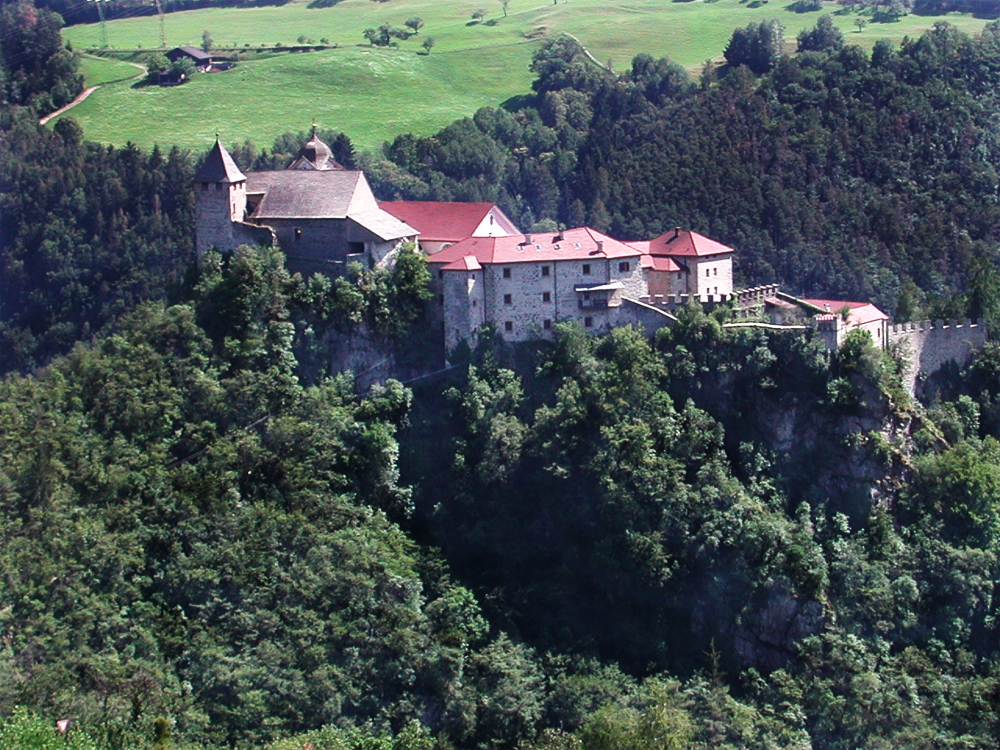
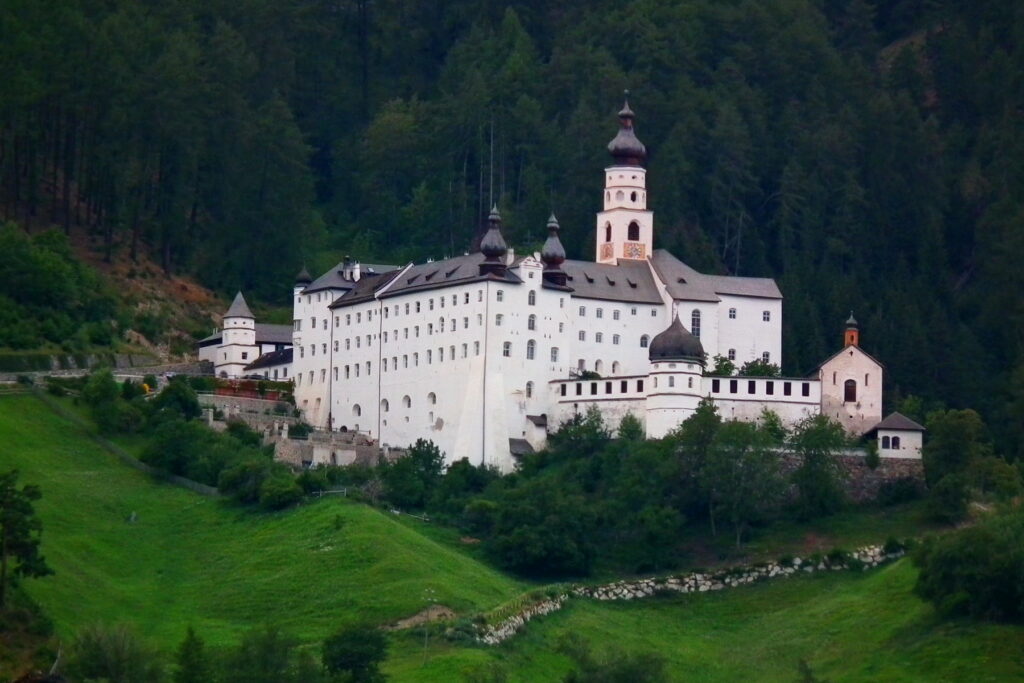
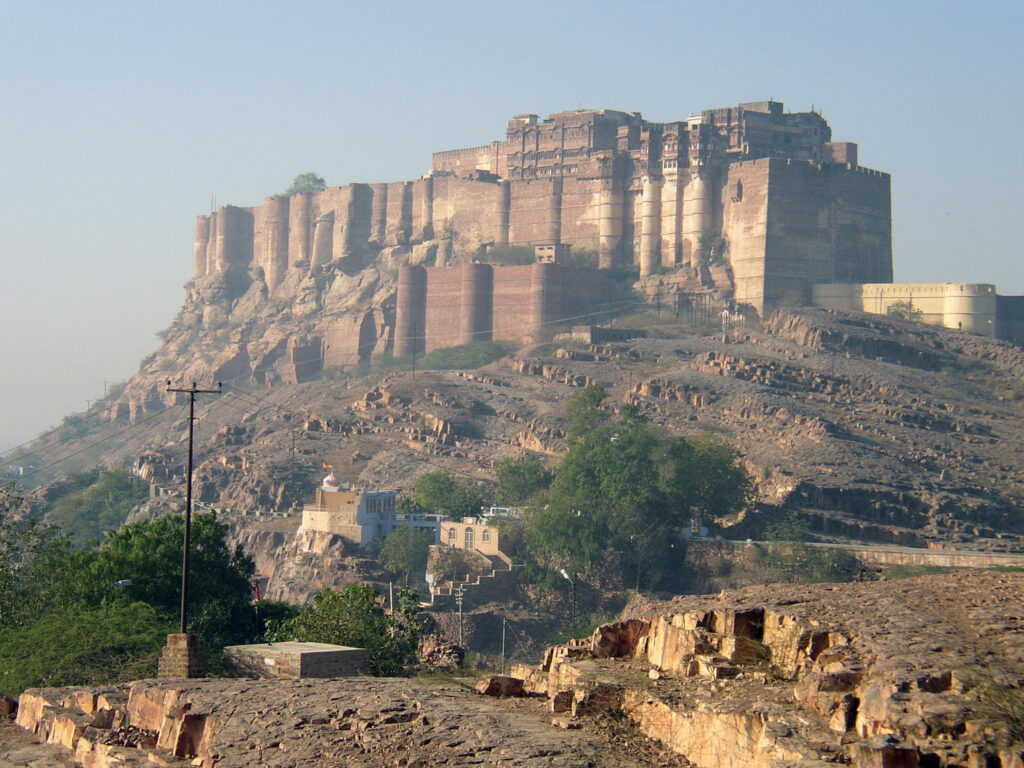
OLYMPUS DIGITAL CAMERA
It is an absurd place, with 2500 Black Horse Troopers, 2600 black horse demons, goblins, and the Hound. It should be something that makes no sense – the castle of a fairy tale villain. Built by dwarfs who owed Ethilrist a favor (or were paid handsomely with knowledge only he might have.). I doubt it even has servants outside of the Black Horse Troop. In fact, I think only initiates of the Black Horse Troop and guests of Ethilrist are permitted within the walls. Maybe the goblins do most of the labor?
By the way, the term “goblin” refers to red elves (elves related to ferns and spore-bearing plants). They have some ties to Darkness (they were saved by Xiola Umbar once when Zorak Zoran wanted to exterminate them or something), so I guess that’s how Ethilrist got a deal with them through the darkness demon that lives in his cloak, or whatever it is. Or maybe it’s a completely different creature in this case. Jeff actually shares Greg’s own description of goblins for this:
Description: Goblins are relatively tall and lanky, with long torsos and wide, bowed legs, and splayed feet and hands. Their joints are swollen and their eyes are prone to catching any light and glowing. Hairless, their ears are small and located atop their heads, much like those of a cat or bat. They wear little clothing, favoring fur mantles or cloaks.
It doesn’t quite line up with red elves but Jeff adds that it’s “perfectly reasonable for Greg or me to tweak descriptions of minor figures.”
Redaylda-Dendara-Ernalda
Jeff talks about the female goddesses of South Peloria:
In South Peloria the cults of Dendara and Ernalda overlap, often with great confusion.
As we all know, Ernalda is the great Earth Goddess of the Theyalans. Her cult is centered on what was once Ernaldela – the land of the Earth Goddesses. Her cult is about Earth, agriculture, fertility, women, childbirth, and community – she is closely associated with the Grain Goddesses. She is also associated with the malevolent aspects of earth through Ty Kora Tek, Maran Gor, and Babeester Gor. Ernalda has many husband-protectors – Orlanth, Yelm, Yelmalio, Flamal, Magasta, Storm Bull, even Argan Argar. Although she generally lets her husband-protectors manage affairs of war and disputes, her priestesses wield great influence and power.
Dendara is the Earth Queen of the Lunar Heartlands. Her cult is centered on Dara Happa, and her cult is also about Earth, fertility, women, childbirth, and community – and like Ernalda she is also closely associated with the Grain Goddesses. However, Dendara has but one husband – Imperial Yelm, and is associated with the malevolent aspects of earth through Gorgorma. Dendara’s priestesses are greatly respected, but must defer to Yelm’s priests and lords. She has a “horsey” aspect as well, as Dendara took pity upon Hippoi and cared for her.
To illustrate this, Jeff uses a picture of Astarte, a goddess that basically looks like a Hellenized version of good ol’ Inanna/Ishtar.
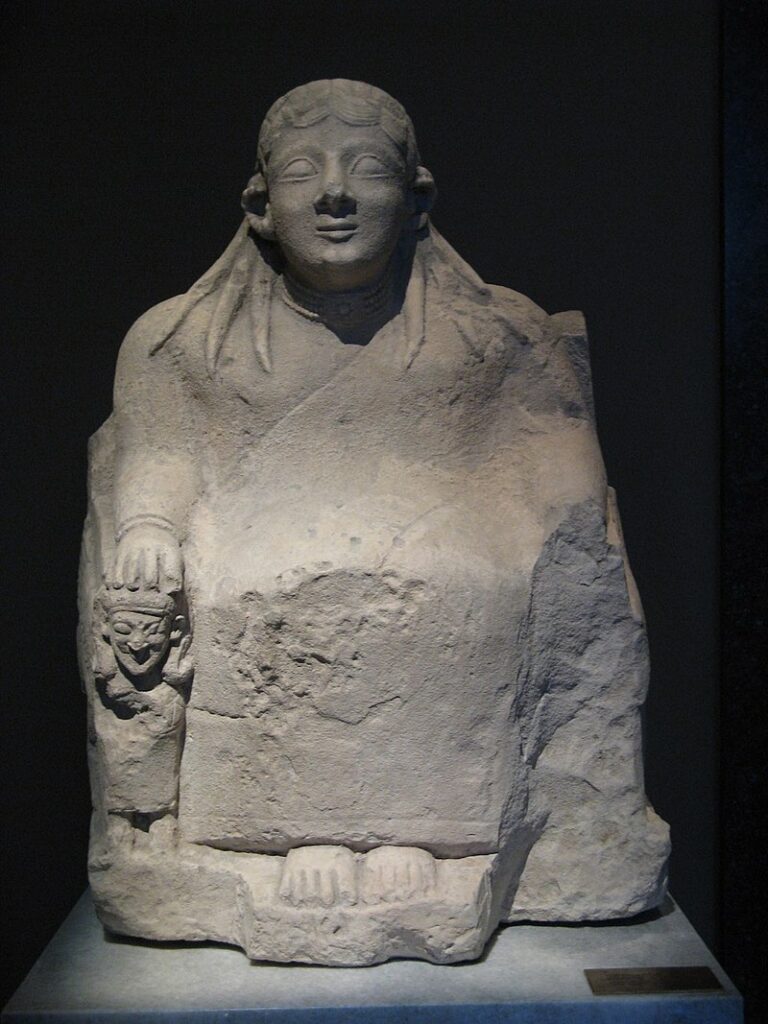
Despite the best efforts of the God Learners, both goddesses consistently denied recognition with the other. They are clearly closely related, but not the same. See the Feathered Horse Queen, who revealed that the great goddess La-Ungariant of Dragon Pass is Ernalda, and not, as all other Pure Horse People believe, Dendara.
Jeff confirms that the God Learners tried to approach these goddesses as different aspects of the same figure, with Dendara as a younger Ernalda before she gets “rescued” by Orlanth and leaves Yelm. But he adds: “[…] unlike most times when the God Learners played their interpretation magic, it failed.” So apparently the cosmos doesn’t agree:
But what is interesting is that this seems an easy identification but the goddesses rejected it! There’s far more concrete difference between Ernalda and Dendara, than between say Yelmalio-Kargzant-Elmal.
The God Learner in you might then theorize that maybe they’re twins, but nope:
[…] Ernalda and Dendara deny even having the same genealogy!
Anyway, back to Ernalda-Dendara worship through Southern Peloria:
In Saird, both goddesses can be found, distinct but often intertwined. Ernalda-Dendara are often clustered together, sharing the same temple, like how the Great Mother and Hecate shared a temple at Samothrace. At Filichet, there is an echo of the ancient Hippoi/Hyalor cults, where the Hippoi goddess – called Redaylda – is the patron of the queens and is associated with the Ernalda cult. Other stories associate her with the ancient Vingkotlings and still others with the Hyalorings of the Dawn. Redaylda is an echo of La-Ungariant/Sorana Tor cult around the Feathered Horse Queen as well.
In the province of Holay, the High Priestess of Redaylda is ruler of the city of Filichet and Queen of Holay. Holay has been a Lunar client state since around 1460 or so and the Lunar Empire has long supported the queens of Holay.
Filichet is an important religious center in the Lunar Provinces. It is best known for its great temple to Ernalda called the Bell Temple, where the Earth goddesses and their consorts are entertained by music created by racks of chime bells. The Bell Temple includes major temples to Pel-Oria and Redaylda, minor temples to Dendara, and Orlanth Adventurous, and shrines to Asrelia, Babeester Gor, Gorgorma, Maran Gor, Ty Kora Tek, and Voria. The Bell Temple recruits and supports the Bell Temple heavy cavalry regiment, a famed unit of the Lunar army.
The city also has a major temple to Barntar Thunderous, with shrines to each of the Seven Lightbringers, and minor temples to Gustbran and Humakt. The market has a major temple shared by Issaries and Etyries, with a minor temple to Lokarnos. There is a great temple to the Seven Mothers, with a major temple to Hwarin Dalthippa, and a shrine to the Red Goddess. The city has a major temple to Yelmalio and a minor temple to Yelm, with shrines to Hyalor and Uleria.
Pantheon Genealogy and Taxonomy
Jeff is having fun with God Learnerism:
Having a little fun working on God Learner divine genealogies – I clearly always loved my Hesiod! Some are filled with fascinating insights if you look at them enough – for example, here’s the genealogy of the Earth deities.

Which gets really interesting when you add the Ernalda and Hykim taxonomies and the Air Gods.
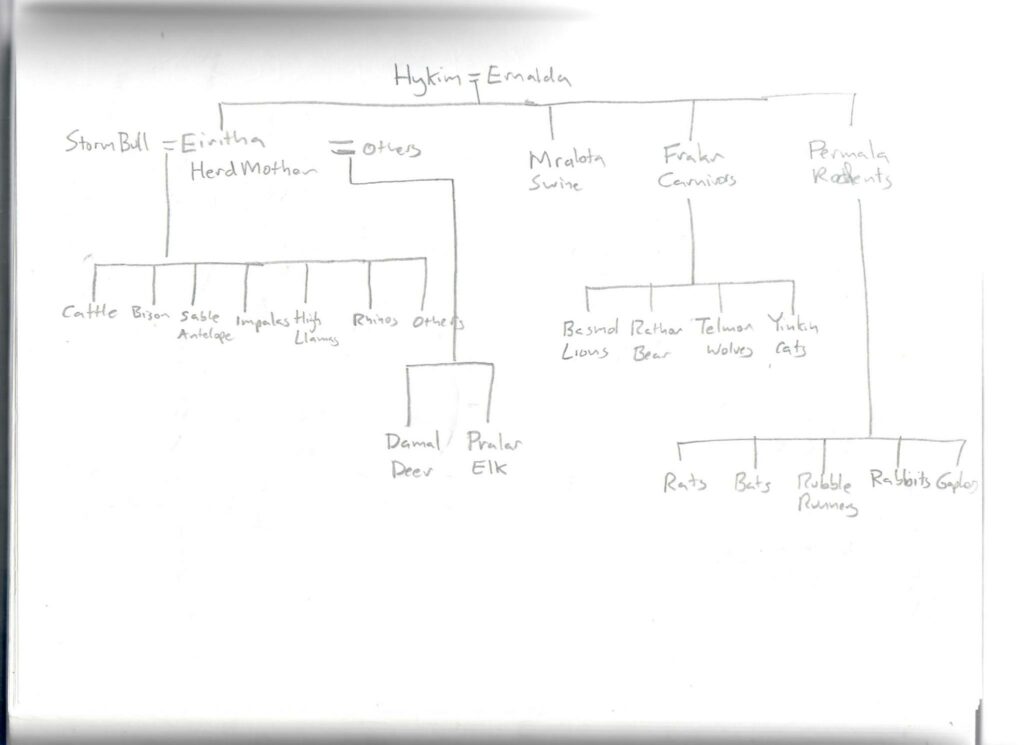
Next is the Air gods:
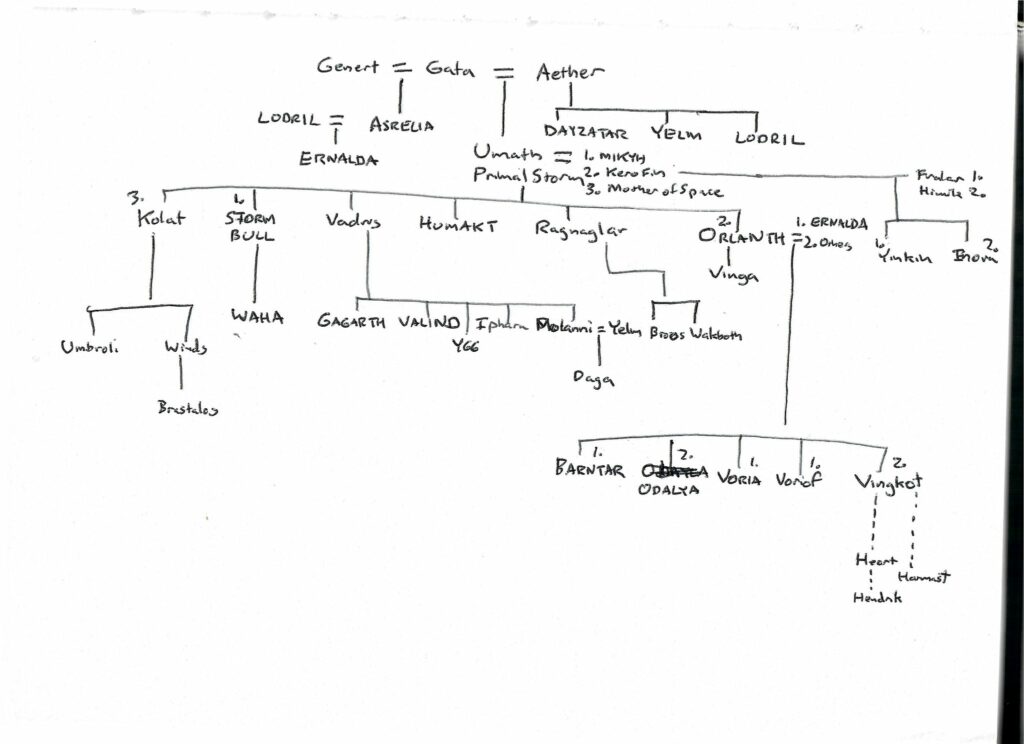
Orlanth, like Ernalda and Yelm, has many children. These are both srvuali (like Vinga) and burtae (like Barntar and Voriof).
Srvuali and Burtae are some technical terms for various types of gods. Srvuali are “lesser incarnations” of Runes (gods that are avatars of a Rune but are also necessarily less representative than the pure Rune itself, since they, you know, can do other stuff). The Burtae are mixtures or offsprings of different Runes (like the children of two Srvuali).
Asrelia and Ernalda have fathers – which help explain what they are (both are burtae after all). Gata is sireless, coming directly from Imarja aka Ga.
Next up, more animals!
Now for some stranger taxonomies, here’s some of the animals NOT descended from Ernalda. Note that Palar and Jaskal are “aunts” or “uncles” of Ernalda and Maran Gor.
How does this square with the idea that dinosaurs are the descendants of dragons? Couple of ways – first remember that Hykim is usually though of as a dragon. So reptiles would be dragons that have descended to the material world of earth. But another way is that dinosaurs aren’t reptiles, but something else – Jaskal is the mother of snakes, lizards, turtles, etc., and not dinosaurs.

In short, this taxonomy does not need to line things up like ours does!
Indeed. One of the favourite past time of Gloranthan scholars is too look at these genealogies and come up with funny stuff like “you know, horses are a type of birds, actually”.
By the way, Jeff sets the record straight on the God Learners:
[…] that is where people get them wrong. The God Learners found connections between deities that were unknown to the stories. But those connections worked and enabled them to do amazing things. In short, the God Learners didn’t squeeze those myths into their own “truth” – rather they carefully studied countless myths, experienced them, and then found new connections previously unknown.
The God Learners downfall did not come because their approach was in error, but because they themselves grew proud and arrogant, and viewed the cosmos as something to be exploited to their benefit.
Community Roundup
The community roundup is our highlight of interesting things being mentioned in the Glorantha-related Facebook groups, sub-Reddits, and other similar online places.
Exploring Glorantha: Tour of Dragon Pass: Sartar
Guest segment by Joerg
J-M and Evan branch off their channel for some geographic exploration of the setting, starting with the focal Kingdom of Sartar., while also announcing a series of exploring the history of this region.
J-M in particular emphasizes the possibilities the amount of detail available for Sartar offers. Evan actually references our Diana Probst interview for how rescuing Kallyr Starbrow at the Battle of Queens can create a big twist on the stetting.
Glorantha Explained Through GIFs
I’ve mentioned before that there are not enough Gloranthan memes out there, so I was very happy to see Effy address this problem on Twitter! Follow the link for GIFs “explaining” Hazia, the War of the Many Suns, Arkat, Newtlings, Prax, and more!
Ardwulf on Gods of Glorantha
Ardwulf goes through the RQ3-era “Gods of Glorantha” boxed set while sharing various anecdotes about RuneQuest and its different editions, Glorantha’s focus on religion, and so on. It’s a short, candid, high level unboxing video which works well if you are curious about what this classic boxed set contains.
Runeblogger Reviews Pirates of the East Isles
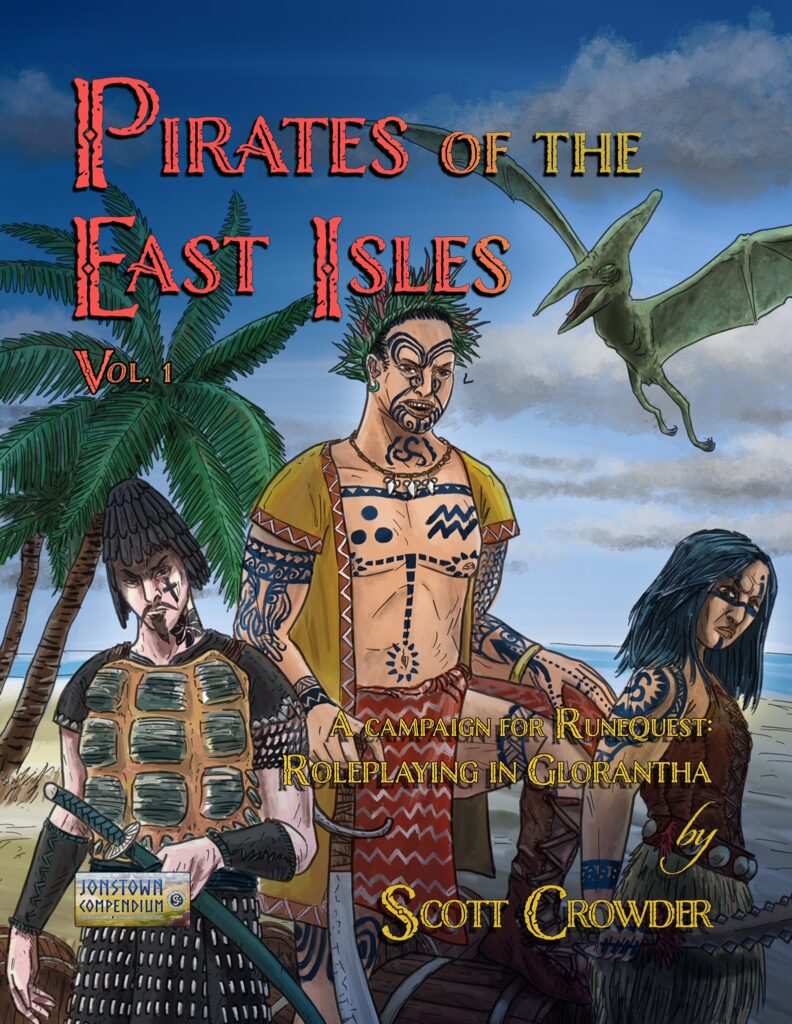
Yep, Runeblogger reviews the book:
Glorantha is a vast world , with many different cultures , landscapes , and religions . However, most of the official publications have always focused on the two most emblematic regions in Glorantha: Dragon Pass and Prax. But, what about the huge variety of adventure-rich background material that extends beyond those two regions? You just need a quick peek into the encyclopedic Guide to Glorantha to see the range of possibilities is almost endless. So, if you are looking forward to explore a refreshing, new part of Glorantha with ready to play scenarios for RuneQuest Roleplaying in Glorantha, you might be interested in checking out Pirates of the East Isles Vol. 1, a book in PDF format penned by Scott Crowder and sold under the Jonstown Compendium section of DrivethruRPG
Disclaimer: I did some art and cartography for this book! Grab it here from DriveThruRPG!
3D Model of the Haraborn Vale
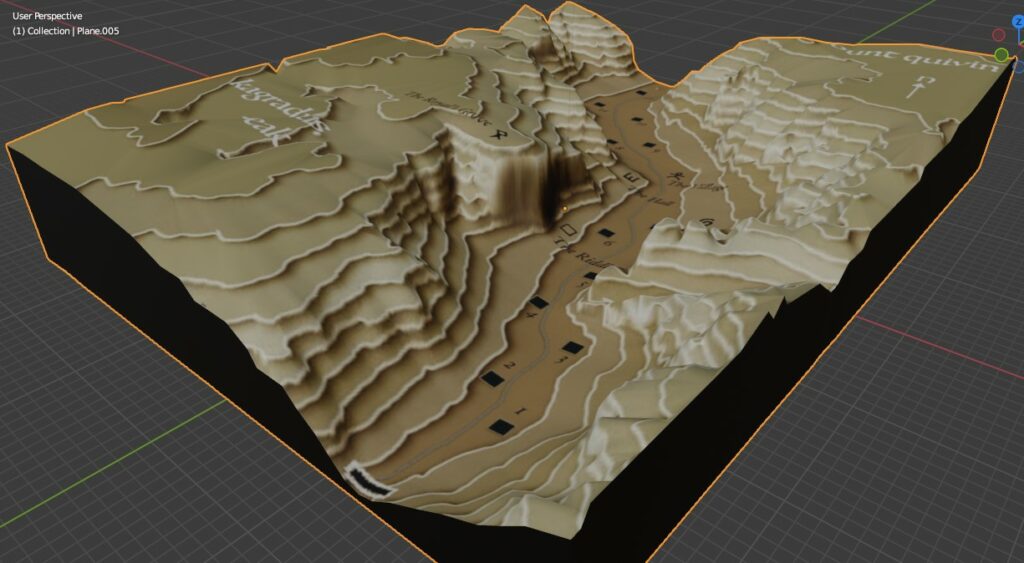
Wayne Peters (which we interviewed on the podcast!) has done this 3D model of the Haraborn clan’s valley, from Six Seasons in Sartar. Looks nice! More pictures here.
Swords and Armour of Glorantha
Katrin Dirim had previously posted a nice collection of Gloranthan helmets… last week she did the same with swords and armour!
Giant Otter and Friend
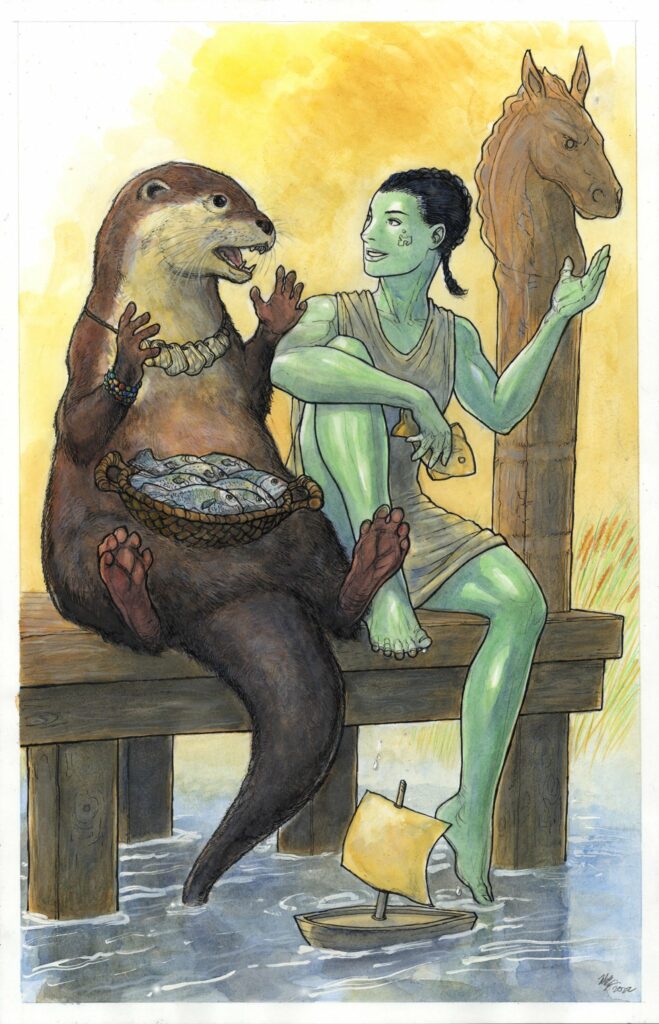
This piece is from Mark Smylie, for Martin Helsdon’s next Jonstown Compendium project, a periplus around the Holy Country:
This picture shows a Giant Otter and friend at Handra.
This is a scene from the Periplus, but the book includes a page specifically about these two, giving their history and stats.
Minecraft RuneQuest
Diana has awesome players — for a mere experience check in a Passion, they make a whole variety of things between sessions. This includes a Humakt temple in Minecraft!

This got the player a Devotion (Humakt) check… more pictures here.
Miniature Scorpionman Fight
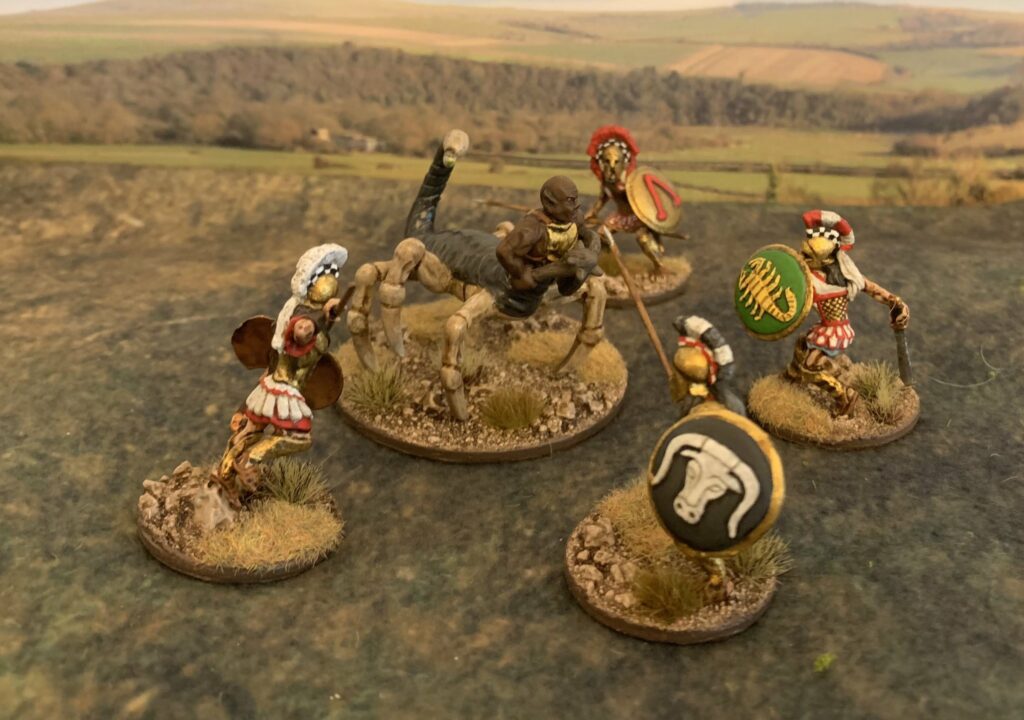
Over on Twitter, Jeremy has some nice painted miniatures of four various warriors about to get stung! More close-up pictures here.
Elsewhere on Arachne Solara’s Web
Not everything is about Glorantha, although most things are! Here are loosely relevant things that we found on the interwebs.
Interactive Map of Herculaneum
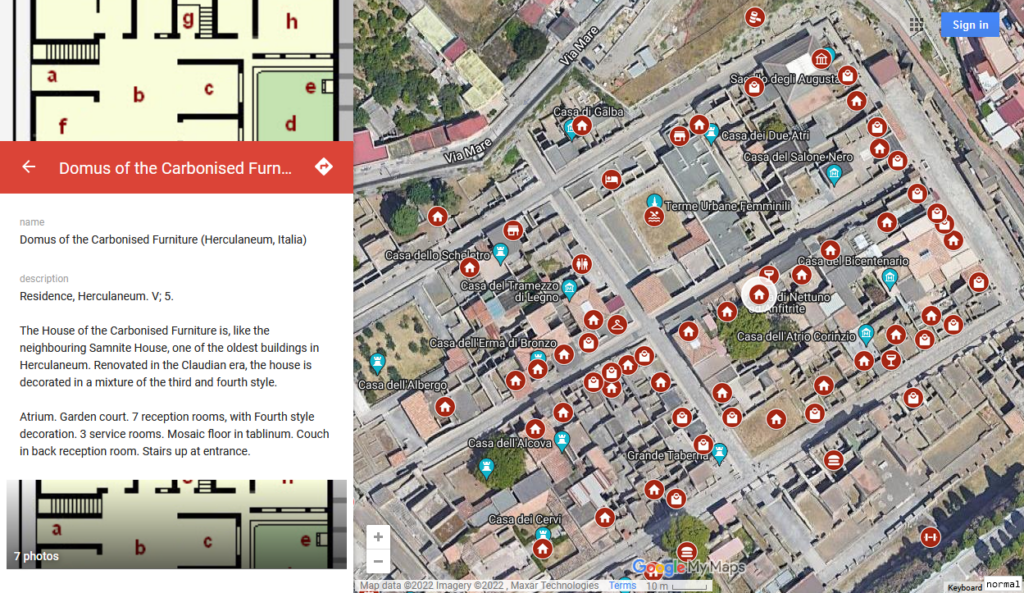
The Digital Maps of the Ancient World blog has a nice interactive map of Herculaneum, a village founded around the 6th century BCE that was destroyed when Mount Vesuvius erupted in 79 CE (more here). Find out where the toilets are, or what kind of entrances and exits were available on the public baths! Plus: some floor plans for some of the residences!
Thank you for reading
That’s it for this week! Please contact us with any feedback, question, or news item we’ve missed!



